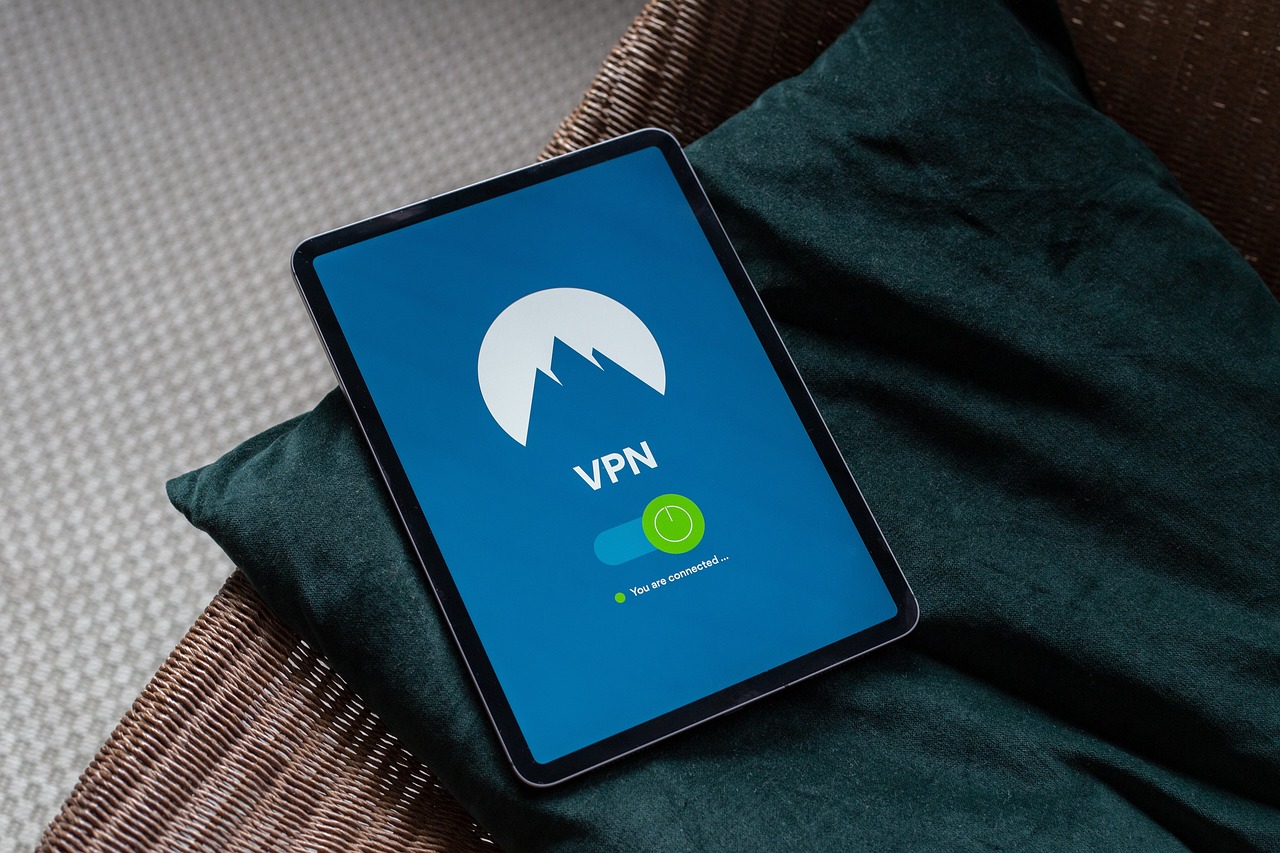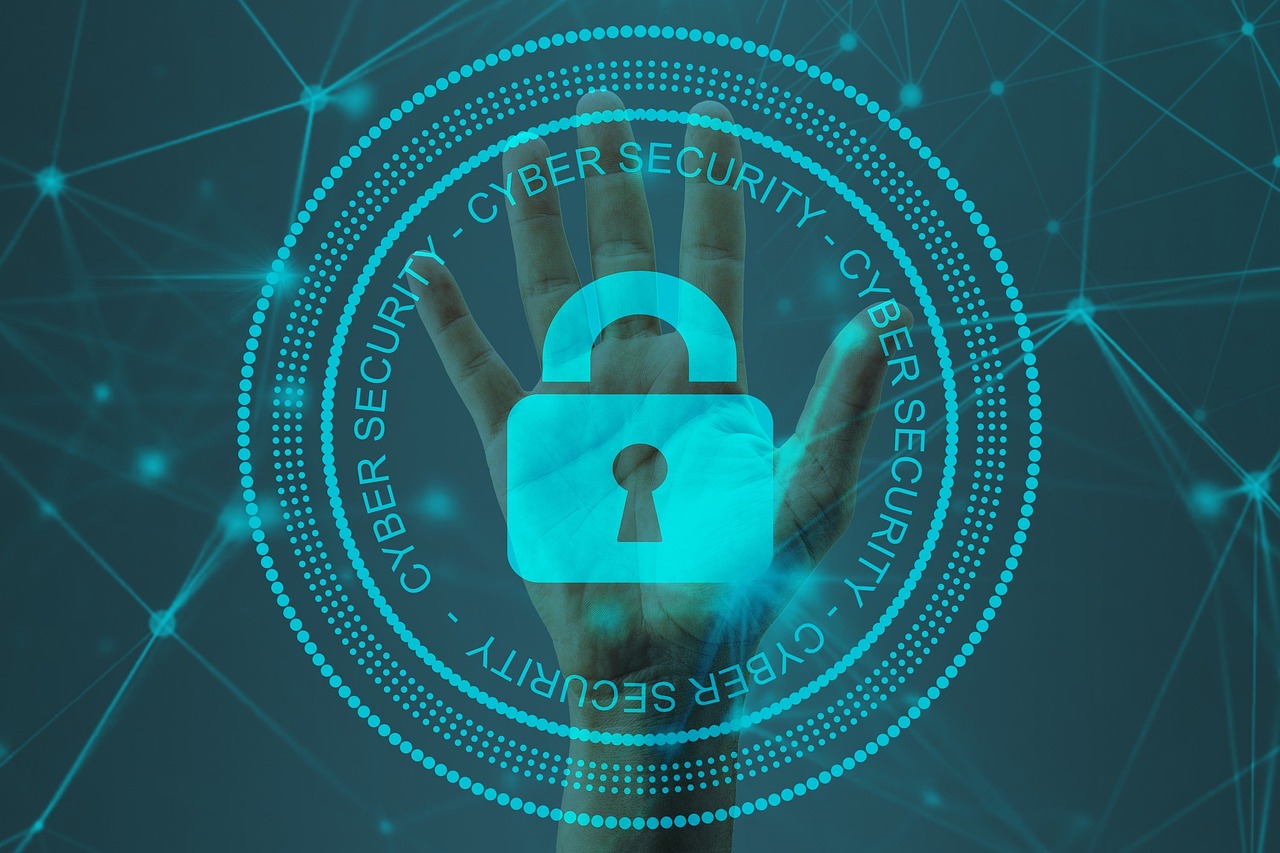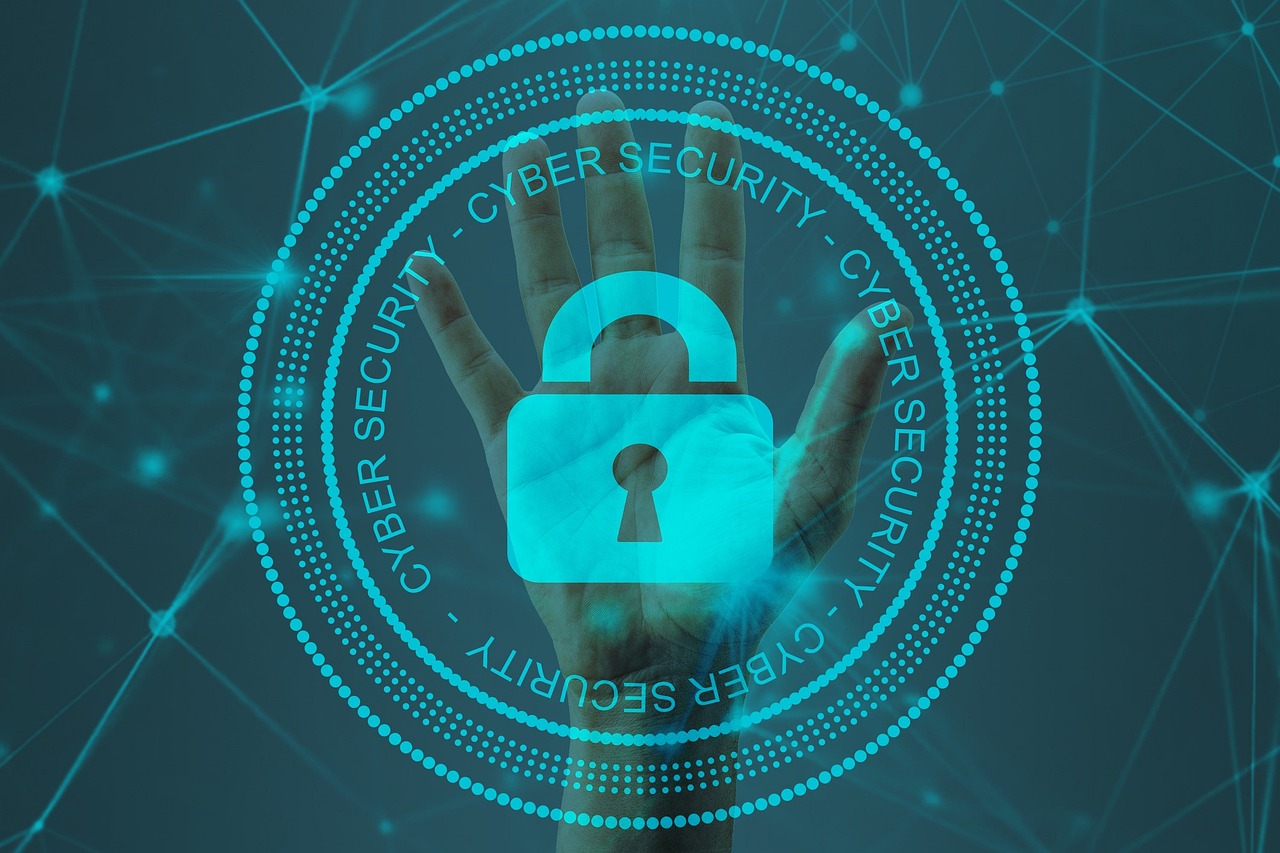How Cybersecurity is Evolving for Military Assets
In today's fast-paced digital world, the battlefield has expanded beyond physical borders, and so has the scope of warfare. The military's reliance on technology has made it imperative to focus on cybersecurity as a critical component of national defense. As we've seen in recent years, the stakes are higher than ever. Cyber threats can cripple military operations, disrupt communications, and compromise sensitive information. The evolution of cybersecurity measures tailored for military assets is not just a trend; it's a necessity in an era where information is power.
Imagine a world where a single cyber attack could disable a nation's defense systems or leak classified information to adversaries. This is not the stuff of science fiction; it's the reality we face today. The military is continuously adapting its cybersecurity strategies to counter these threats, ensuring that our national security remains intact. From implementing advanced technologies to enhancing personnel training, the evolution of military cybersecurity is a multi-faceted approach aimed at fortifying defenses against a wide array of cyber adversaries.
One of the most significant changes in military cybersecurity is the integration of artificial intelligence (AI) and machine learning. These technologies allow for real-time threat detection and response, significantly reducing the window of vulnerability. By analyzing vast amounts of data, AI can identify patterns and anomalies that human analysts might miss, enabling quicker responses to potential threats. Furthermore, innovations such as blockchain technology are being explored to secure communications and transactions, making it increasingly difficult for adversaries to tamper with military operations.
Moreover, the military is recognizing the importance of collaboration with the private sector. By partnering with cybersecurity firms, the military can leverage industry expertise and cutting-edge tools that enhance its defensive capabilities. This collaboration has led to the development of joint cybersecurity initiatives, fostering innovation and resource sharing. Such partnerships are crucial in creating a robust cybersecurity posture capable of adapting to the ever-evolving threat landscape.
As we delve deeper into the specifics of military cybersecurity evolution, it’s essential to highlight the significance of training and awareness. Military personnel must be equipped with the knowledge and skills to recognize and respond to cyber threats. Regular training programs and simulated cyber attack drills are vital in preparing personnel for real-world scenarios. This hands-on experience not only enhances readiness but also fosters a culture of vigilance and proactive defense.
In conclusion, the evolution of cybersecurity for military assets is a dynamic and ongoing process. With the integration of cutting-edge technologies, strategic partnerships, and a strong emphasis on personnel training, the military is taking significant steps to protect its operations and sensitive information. As cyber threats continue to grow in sophistication, the importance of robust cybersecurity measures cannot be overstated. The future of military operations will undoubtedly hinge on how well we can adapt to and combat these challenges.
- What are the main cyber threats facing military assets?
Military assets face various threats, including malware, phishing, and advanced persistent threats (APTs) that target defense systems. - How is artificial intelligence used in military cybersecurity?
AI is used for real-time threat detection and response, analyzing large data sets to identify patterns and anomalies that indicate potential threats. - Why is collaboration with private cybersecurity firms important?
Collaborating with private firms allows the military to leverage industry expertise, share intelligence on threats, and access advanced cybersecurity tools. - How does training enhance military cybersecurity?
Training ensures that military personnel are aware of best practices and can effectively respond to cyber threats, reducing the risk of human error leading to breaches.

The Importance of Cybersecurity in the Military
In today's digital age, the significance of cybersecurity in the military cannot be overstated. As military operations increasingly rely on advanced technology, the need to protect sensitive data and critical infrastructure is more pressing than ever. Imagine a battlefield where information flows seamlessly, but one wrong click can lead to catastrophic consequences. This is the reality we face, where cyber threats lurk in the shadows, waiting to exploit vulnerabilities.
Cybersecurity serves as the backbone of military operations, ensuring that the integrity of data is maintained and that operations remain undisrupted. With the stakes so high, every military personnel must understand their role in safeguarding information. The ramifications of a cyber breach can extend beyond immediate operational disruptions; it can compromise national security, endanger lives, and undermine public trust in military capabilities.
To put it simply, cybersecurity is not just about protecting computers and networks; it’s about protecting the very essence of military power. Consider the following critical aspects that highlight its importance:
- Protection of Sensitive Information: Military operations often involve classified information that, if exposed, could jeopardize missions and endanger personnel.
- Operational Continuity: Cybersecurity measures ensure that military systems remain functional and reliable, even in the face of cyber attacks.
- National Security: A successful cyber attack can have far-reaching consequences, affecting not just military operations but the nation's overall security posture.
Moreover, the military must adopt a proactive stance in its cybersecurity strategy. This involves not only implementing cutting-edge technologies but also fostering a culture of cybersecurity awareness among all personnel. The military's unique position requires it to be at the forefront of cybersecurity innovation, constantly adapting to new threats and challenges.
As we delve deeper into the digital battlefield, the importance of cybersecurity in the military will only continue to grow. With adversaries employing increasingly sophisticated tactics, the military must prioritize cybersecurity as a fundamental aspect of its operational strategy. This is not just about defense; it's about maintaining the upper hand in an ever-evolving landscape of threats.
- Why is cybersecurity crucial for military operations?
Cybersecurity is essential to protect sensitive information, ensure operational continuity, and safeguard national security. - What are some common cyber threats faced by the military?
The military faces threats like malware, phishing attacks, and advanced persistent threats (APTs) from various adversaries. - How does the military train personnel in cybersecurity?
The military conducts training programs and simulated cyber attack drills to enhance awareness and preparedness among personnel. - What role does technology play in military cybersecurity?
Emerging technologies like AI, machine learning, and blockchain are pivotal in enhancing defense mechanisms against cyber threats.

Current Cyber Threats Facing Military Assets
In today's digital age, military assets are not just fortified with physical barriers; they are also challenged by a myriad of cyber threats that can compromise their effectiveness and security. The battlefield has expanded beyond traditional warfare, and as a result, cyber adversaries are constantly evolving their tactics to exploit vulnerabilities within military systems. This section delves into the most pressing cyber threats that military assets face, including malware, phishing, and advanced persistent threats (APTs).
One of the most prevalent threats is malware, which can infiltrate military systems through various vectors, such as infected emails or compromised software. Once inside, malware can disrupt operations, steal sensitive data, or even take control of critical systems. The implications of such breaches can be catastrophic, leading to operational failures or the exposure of classified information.
Phishing attacks are another significant concern. These deceptive tactics involve tricking personnel into revealing sensitive information, such as passwords or access codes, often through seemingly legitimate emails or messages. The human element is often the weakest link in cybersecurity, making targeted phishing campaigns particularly effective against military personnel who may not be fully aware of the latest threats.
Moreover, we cannot overlook the danger posed by advanced persistent threats (APTs). These are sophisticated, targeted attacks typically orchestrated by well-funded state-sponsored groups aiming to infiltrate military networks over an extended period. APTs are characterized by their stealthy nature, often going undetected for months while they gather intelligence and establish footholds within military infrastructures.
To provide a clearer picture of the various cyber threats facing military assets, the following table summarizes the key types of threats along with their potential impacts:
| Type of Threat | Description | Potential Impact |
|---|---|---|
| Malware | Malicious software designed to disrupt, damage, or gain unauthorized access to systems. | Operational disruption, data theft, system control. |
| Phishing | Deceptive attempts to acquire sensitive information by masquerading as a trustworthy entity. | Identity theft, unauthorized access, data breaches. |
| Advanced Persistent Threats (APTs) | Prolonged and targeted cyberattacks where an intruder gains access to a network and remains undetected. | Intelligence gathering, long-term infiltration, operational sabotage. |
As military operations increasingly rely on interconnected systems and digital technologies, the need to understand and combat these cyber threats becomes more critical than ever. The potential consequences of a successful cyberattack can extend beyond immediate operational failures, affecting national security and international relations. The military must remain vigilant and proactive in addressing these evolving threats to ensure that their assets and operations remain secure.
- What is the most common cyber threat facing military assets?
Malware is one of the most common threats, as it can disrupt operations and steal sensitive data. - How can military personnel protect themselves from phishing attacks?
Awareness and training are key; personnel should be educated on recognizing suspicious emails and verifying sources before sharing information. - What are advanced persistent threats (APTs)?
APTs are sophisticated attacks aimed at infiltrating networks over time, often conducted by state-sponsored groups.

State-Sponsored Cyber Attacks
In today’s digital age, the battlefield has expanded beyond traditional military confrontations and into the vast, complex world of cyberspace. represent one of the most pressing threats to military assets, as nation-states leverage their advanced cyber capabilities to disrupt operations and gather crucial intelligence on their adversaries. These attacks are not merely the work of rogue hackers; they are orchestrated by governments with strategic objectives, often aiming to undermine national security, create chaos, or gain a competitive edge.
What makes state-sponsored attacks particularly dangerous is their sophistication and the resources behind them. Unlike typical cybercriminals, state actors often have access to extensive funding, advanced technology, and a pool of skilled personnel. They employ a variety of tactics, including:
- Malware Deployment: Using malicious software to infiltrate systems, steal data, or disrupt services.
- Phishing Schemes: Crafting deceptive emails to trick military personnel into revealing sensitive information.
- Advanced Persistent Threats (APTs): Long-term, targeted attacks designed to gain continuous access to networks.
One of the most notable examples of state-sponsored cyber attacks is the Stuxnet worm, which was reportedly developed by the United States and Israel to sabotage Iran's nuclear program. This highly sophisticated piece of malware was able to cause physical damage to centrifuges while remaining undetected for a prolonged period. Such incidents highlight the potential for cyber attacks to not only gather intelligence but also to inflict real-world damage on critical military infrastructure.
Moreover, the implications of these attacks extend beyond immediate damage. They can erode public trust in military institutions, destabilize geopolitical relations, and even provoke retaliatory measures. As nation-states continue to refine their cyber warfare strategies, the need for robust defenses becomes paramount. Military organizations must not only invest in cutting-edge technology but also foster a culture of cybersecurity awareness among personnel.
In response to these threats, many governments are enhancing their cybersecurity frameworks by implementing multi-layered defense strategies. This includes:
| Strategy | Description |
|---|---|
| Threat Intelligence Sharing | Collaboration with other nations and private sectors to share information on emerging threats. |
| Incident Response Teams | Establishing specialized teams to respond quickly to cyber incidents and mitigate damage. |
| Regular Security Audits | Conducting frequent assessments of systems to identify vulnerabilities and enhance defenses. |
As the landscape of warfare evolves, so too must the strategies employed to protect military assets from state-sponsored cyber threats. Continuous adaptation, investment in technology, and a proactive approach to cybersecurity will be crucial in safeguarding sensitive information and ensuring operational integrity in the face of these sophisticated adversaries.
- What are state-sponsored cyber attacks? State-sponsored cyber attacks are malicious actions conducted by government entities to disrupt, damage, or gather intelligence from other nations' systems.
- How do state-sponsored attacks differ from regular cybercrime? State-sponsored attacks are typically more sophisticated, organized, and funded by governments, whereas regular cybercrime is often opportunistic and less coordinated.
- What steps can military organizations take to defend against these attacks? Military organizations can enhance their defenses through threat intelligence sharing, incident response teams, regular security audits, and continuous training for personnel.

Case Studies of Notable Attacks
In the realm of cybersecurity, understanding the tactics and strategies employed by attackers is crucial for developing effective defenses. Several high-profile cyber attacks against military assets have highlighted vulnerabilities and the evolving nature of threats. One of the most notable incidents was the Stuxnet worm, which targeted Iran's nuclear facilities in 2010. This sophisticated piece of malware demonstrated how cyber warfare could be used to achieve strategic military objectives without traditional military engagement. By manipulating industrial control systems, Stuxnet caused significant damage while remaining undetected for a long period.
Another significant case is the Office of Personnel Management (OPM) breach in 2015, where hackers stole sensitive personal information of over 21 million federal employees, including military personnel. This breach underscored the importance of protecting not just operational data but also personal information, which could be used for identity theft or espionage. The attack was attributed to state-sponsored actors, emphasizing the ongoing threat posed by nation-states in the cyber domain.
Additionally, the 2017 WannaCry ransomware attack had a profound impact on various sectors, including military operations. While it primarily targeted healthcare institutions, its rapid spread across networks showcased how vulnerable interconnected systems could be. The attack exploited a vulnerability in Microsoft Windows, leading to widespread disruptions. Military assets that relied on outdated systems were at risk, illustrating the need for constant updates and patches to defend against such attacks.
To further illustrate the evolving tactics used by cyber adversaries, consider the following table that summarizes notable attacks:
| Attack | Year | Target | Impact |
|---|---|---|---|
| Stuxnet | 2010 | Iran's Nuclear Facilities | Significant damage to centrifuges; showcased cyber warfare capabilities. |
| OPM Breach | 2015 | U.S. Federal Employees | Stolen personal data of 21 million; risk of identity theft. |
| WannaCry | 2017 | Global (including military assets) | Widespread disruption; highlighted vulnerabilities in outdated systems. |
These case studies not only showcase the sophisticated methods used by cyber attackers but also serve as a wake-up call for military organizations. They reveal the critical need for robust cybersecurity measures, constant vigilance, and the importance of learning from past incidents to prevent future breaches. As military assets increasingly rely on digital infrastructure, the lessons learned from these attacks must inform the development of comprehensive cybersecurity strategies.
- What is Stuxnet, and why is it significant? Stuxnet is a computer worm that specifically targeted Iran's nuclear facilities, showcasing the potential for cyber warfare to achieve military objectives.
- How did the OPM breach affect military personnel? The OPM breach compromised sensitive personal information of federal employees, including military personnel, leading to risks of identity theft and espionage.
- What can be learned from the WannaCry attack? The WannaCry attack highlighted the vulnerabilities of outdated systems and the need for regular updates and cybersecurity measures to protect military assets.

Preventative Measures Against State Threats
In today's digital battlefield, the stakes are higher than ever, especially when it comes to protecting military assets from state-sponsored cyber threats. These sophisticated attacks can compromise not just sensitive information, but also the very integrity of military operations. To counter these threats effectively, a multi-layered approach is essential. This involves not only advanced technology but also strategic planning and human vigilance.
First and foremost, implementing robust cybersecurity frameworks is critical. This includes adopting industry best practices and standards such as the NIST Cybersecurity Framework, which provides a comprehensive outline for managing cybersecurity risks. By establishing a solid foundation for cybersecurity, military organizations can better defend against potential breaches. Additionally, regular assessments and audits of existing systems can help identify vulnerabilities before they can be exploited.
Another key preventative measure is the integration of advanced threat detection systems. Utilizing artificial intelligence (AI) and machine learning algorithms can significantly enhance the ability to detect anomalies and potential threats in real-time. These technologies can analyze vast amounts of data and identify patterns that human analysts might miss, allowing for quicker response times to emerging threats.
Moreover, employee training and awareness cannot be overlooked. Even the most sophisticated systems can fall victim to human error. By conducting regular training sessions and awareness programs, military personnel can be educated about the latest phishing techniques, social engineering tactics, and other common cyber threats. This proactive approach significantly reduces the risk of breaches caused by unsuspecting individuals.
In addition to internal measures, collaboration with other government agencies and private sector cybersecurity firms is crucial. Sharing intelligence and resources can enhance the overall cybersecurity posture. For instance, joint exercises and information-sharing initiatives can help military organizations stay ahead of evolving threats. By pooling knowledge and resources, the military can leverage the expertise of the private sector, which often operates at the cutting edge of cybersecurity technology.
Finally, establishing a rapid response team dedicated to addressing cyber incidents can greatly improve resilience. This team should be well-trained and equipped to handle various scenarios, from minor breaches to full-scale cyber warfare. Their ability to quickly assess and respond to incidents can mitigate damage and restore operations faster than ever.
In conclusion, defending against state-sponsored cyber threats requires a comprehensive strategy that includes technology, training, collaboration, and rapid response capabilities. By adopting these preventative measures, military organizations can better safeguard their assets and maintain operational integrity in an increasingly hostile cyberspace.
- What are state-sponsored cyber threats? State-sponsored cyber threats are malicious cyber activities conducted by government entities to disrupt, gather intelligence, or damage the operations of another nation.
- How can military personnel be trained to prevent cyber threats? Military personnel can be trained through regular cybersecurity awareness programs, simulated attack drills, and ongoing education about the latest cyber threats and best practices.
- Why is collaboration with private sector firms important? Collaboration with private sector firms is important because it allows military organizations to leverage industry expertise, access advanced technologies, and share intelligence on emerging cyber threats.
- What role does AI play in military cybersecurity? AI plays a crucial role in military cybersecurity by enhancing threat detection capabilities, analyzing large datasets for anomalies, and automating responses to potential threats.

Emerging Technologies in Cyber Defense
The landscape of cybersecurity is evolving at an astonishing pace, especially when it comes to protecting military assets. In this digital age, where threats are becoming increasingly sophisticated, emerging technologies are stepping up to the plate, providing innovative solutions to combat these challenges. Imagine a robust defense system that can predict and neutralize cyber threats before they even materialize—that's the promise of technologies like artificial intelligence (AI), machine learning (ML), and blockchain.
AI and ML are revolutionizing the way military organizations analyze data and detect anomalies. By employing algorithms that learn from historical data, these technologies can identify patterns that may indicate a cyber attack. This capability not only enhances the speed of threat detection but also significantly reduces the response time. For instance, when a potential breach is detected, AI systems can automatically initiate countermeasures, effectively neutralizing threats in real-time.
Moreover, blockchain technology is making waves in the realm of cybersecurity by providing a decentralized and tamper-proof ledger. This is particularly beneficial for military operations that rely on secure communication and data sharing. With blockchain, sensitive information can be shared across various units without the fear of interception or manipulation. The transparency and security that blockchain offers can help build trust among military personnel and allied forces, ensuring that everyone is on the same page.
In addition to these technologies, quantum computing is on the horizon, promising to change the game entirely. While still in its infancy, quantum computing has the potential to break current encryption methods, which could pose a significant threat to military communications. However, it also brings about the opportunity to develop new, more secure encryption techniques that can withstand the power of quantum attacks. The military's investment in quantum research could lead to breakthroughs that fortify their cybersecurity infrastructure.
As we delve deeper into the world of cybersecurity, it’s crucial to recognize that these emerging technologies are not standalone solutions. They work best when integrated into a comprehensive cybersecurity strategy. This means that military organizations must not only adopt new technologies but also continuously assess and adapt their defense mechanisms to stay ahead of adversaries.
To summarize, the integration of emerging technologies in cyber defense is essential for the military to safeguard its assets against evolving threats. By harnessing the power of AI, ML, blockchain, and quantum computing, the military can enhance its cybersecurity posture, ensuring that sensitive information remains protected even in the face of sophisticated attacks.
- What are the main benefits of using AI in military cybersecurity?
AI enhances threat detection, reduces response times, and automates countermeasures, making military operations more secure. - How does blockchain improve military communication?
Blockchain provides a secure, decentralized method for sharing sensitive information, ensuring data integrity and preventing unauthorized access. - What is the future of quantum computing in cybersecurity?
While it poses new threats, quantum computing also offers opportunities for developing advanced encryption methods that could revolutionize military cybersecurity.

Training and Awareness for Military Personnel
In today’s digital age, where information can be both a weapon and a shield, training military personnel on cybersecurity best practices is not just important; it’s absolutely essential. Imagine being on the front lines of a battlefield where the enemy is not just in the trenches but also lurking in the shadows of cyberspace. This is the reality for modern military forces. The stakes are incredibly high, and a single lapse in judgment can lead to catastrophic consequences. That’s why military training programs are evolving to incorporate comprehensive cybersecurity awareness initiatives.
Awareness programs are designed to equip personnel with the knowledge and skills necessary to recognize and respond to cyber threats effectively. These programs often include a variety of training methods, such as interactive workshops, online courses, and real-world simulations. By engaging in these activities, military members can better understand the tactics used by cyber adversaries and learn how to defend against them. For example, a typical training session might cover:
- Identifying phishing attempts and social engineering tactics
- Understanding the importance of strong passwords and secure communications
- Recognizing the signs of malware infections
- Practicing incident response protocols
Moreover, simulated cyber attack drills are a pivotal part of this training. These drills mimic real-world cyber threats, allowing military personnel to practice their responses in a controlled environment. Just like a fire drill prepares firefighters for an emergency, these cyber drills prepare soldiers for the unpredictable nature of cyber warfare. During these simulations, teams can identify weaknesses in their defenses and learn to coordinate their responses, which is crucial when every second counts.
Another key aspect of training is the emphasis on continuous learning and adaptation. The cybersecurity landscape is constantly changing, with new threats emerging almost daily. Therefore, it’s vital for military personnel to stay updated on the latest trends and techniques in cyber defense. Regular refresher courses and updates on emerging threats ensure that soldiers are not only prepared for today’s challenges but also for tomorrow’s uncertainties.
To further enhance the effectiveness of these training programs, collaboration with cybersecurity experts from the private sector is increasingly common. By leveraging industry knowledge and resources, military training can become more robust and relevant. This partnership can lead to the development of specialized training modules that address specific threats faced by military assets.
In conclusion, as the battlefield evolves, so too must the training and awareness programs for military personnel. By fostering a culture of cybersecurity awareness and continuous learning, the military can significantly enhance its resilience against cyber threats. After all, in a world where the next attack could come from anywhere, being prepared is the best defense.
- Why is cybersecurity training important for military personnel?
Cybersecurity training is crucial as it helps personnel recognize and respond to cyber threats, protecting sensitive information and military operations. - What types of threats do military personnel learn to identify?
Military personnel learn to identify threats such as phishing, malware, and social engineering tactics that could compromise security. - How often should training programs be updated?
Training programs should be updated regularly to reflect the latest cybersecurity trends and threats, ensuring personnel remain informed and prepared. - What role do simulations play in training?
Simulations provide hands-on experience in responding to cyber threats, allowing personnel to practice their skills in a realistic environment.

Simulated Cyber Attack Drills
In today's digital age, where threats lurk around every corner, have become an essential component of military training. These drills are not just about running through a checklist; they are immersive experiences designed to mimic real-world cyber threats. Imagine being in a high-stakes game where every decision could mean the difference between success and failure. That's exactly what these drills aim to prepare military personnel for.
During these simulations, teams engage in a variety of scenarios that challenge their ability to respond to cyber incidents. From detecting intrusions to mitigating damage, the drills cover a broad spectrum of potential attack vectors. For instance, personnel might face a simulated ransomware attack that locks down critical systems, forcing them to act quickly and effectively to restore operations. The pressure is on, and the stakes are high, mirroring the reality they may one day face.
One of the key benefits of these drills is that they provide a controlled environment where military personnel can learn from their mistakes without the risk of real-world consequences. This hands-on approach allows them to experiment with different strategies and tools, enhancing their problem-solving skills. Moreover, it fosters teamwork, as members must communicate effectively and coordinate their efforts to thwart the simulated attack.
To ensure these drills are as realistic as possible, military units often collaborate with cybersecurity experts from both the public and private sectors. This partnership brings in valuable insights and up-to-date knowledge on the latest cyber threats and attack methodologies. By integrating this expertise, the drills can simulate not just the technical aspects of a cyber attack, but also the psychological pressures that come with it.
Furthermore, the debriefing sessions that follow these drills are crucial. They provide an opportunity for participants to reflect on their performance, discuss what worked, and identify areas for improvement. It's in these discussions that valuable lessons are learned, making the next drill even more impactful. The continuous cycle of practice, feedback, and adaptation is what keeps military personnel sharp and ready for any cyber challenge they may encounter.
In conclusion, simulated cyber attack drills are not merely training exercises; they are a vital part of modern military readiness. By engaging in realistic scenarios, personnel can develop the skills and confidence needed to protect critical assets in an increasingly hostile cyber landscape. As the saying goes, "practice makes perfect," and in the world of cybersecurity, this couldn't be more true.
- What are simulated cyber attack drills?
Simulated cyber attack drills are training exercises that mimic real-world cyber threats to prepare military personnel for potential cyber incidents.
- Why are these drills important?
They are crucial for developing response skills, enhancing teamwork, and learning from mistakes in a controlled environment.
- Who participates in these drills?
Military personnel, along with cybersecurity experts from various sectors, often collaborate to make the drills realistic and effective.
- What happens after a drill?
Debriefing sessions take place to discuss performance, identify improvements, and reinforce lessons learned for future drills.

Continuous Learning and Adaptation
In the ever-evolving landscape of cybersecurity, are not just beneficial; they are absolutely essential. As cyber threats become increasingly sophisticated, military personnel must stay one step ahead. Just like a chess player who studies their opponent's strategies, the military must constantly analyze new tactics and technologies that adversaries employ. This proactive approach ensures that defenses remain robust against emerging threats.
One of the key elements in this continuous learning process is the implementation of regular training programs. These programs are designed not only to refresh existing knowledge but also to introduce new concepts and technologies. For instance, incorporating the latest advancements in artificial intelligence (AI) and machine learning into training regimens can significantly enhance the military's ability to detect and respond to cyber threats. Imagine a soldier equipped with not just a weapon, but also the knowledge of how to use cutting-edge technology to outsmart an enemy's digital intrusion.
Furthermore, adaptation isn't just about learning new skills; it's also about fostering a culture of curiosity and innovation within military ranks. Encouraging personnel to engage in discussions, share insights, and collaborate on cybersecurity challenges can lead to groundbreaking solutions. Regular workshops and brainstorming sessions can serve as platforms for exchanging ideas and experiences, ultimately leading to a more resilient military cybersecurity posture.
To facilitate this continuous learning environment, it is crucial to establish a structured framework that includes:
- Regular assessments of current skills and knowledge
- Access to updated resources and training materials
- Opportunities for hands-on experience through simulations and drills
- Collaboration with cybersecurity experts and industry leaders
Moreover, maintaining a feedback loop is vital. By analyzing the outcomes of simulated cyber attacks and real-world incidents, military personnel can identify weaknesses and areas for improvement. This iterative process of evaluation and adaptation ensures that the military can respond to threats with agility and precision.
In summary, the journey of continuous learning and adaptation in military cybersecurity is akin to a relentless pursuit of knowledge and improvement. As threats evolve, so too must the strategies and skills of military personnel. By embracing a culture of learning, fostering collaboration, and leveraging technological advancements, the military can fortify its defenses and safeguard national security more effectively.
- Why is continuous learning important in cybersecurity?
Continuous learning is crucial because cyber threats are constantly evolving. Staying updated on the latest tactics and technologies helps military personnel effectively counter these threats. - What role does training play in adaptation?
Training provides military personnel with the skills and knowledge necessary to adapt to new challenges and technologies, ensuring they are prepared for any cyber threat. - How can collaboration enhance military cybersecurity?
Collaboration with private sector firms and cybersecurity experts allows the military to leverage industry knowledge, share intelligence, and access advanced tools and resources.

Collaboration with Private Sector Cybersecurity Firms
In today's rapidly evolving digital landscape, the collaboration between military forces and private sector cybersecurity firms has become not just beneficial, but essential. The military operates in an environment where the stakes are incredibly high, and the consequences of a cyber breach can be catastrophic. By teaming up with private industry, the military can tap into a wealth of expertise, cutting-edge technology, and innovative strategies that are crucial for staying ahead of cyber threats.
One of the primary advantages of this collaboration is the access to advanced technologies. Private firms often invest heavily in research and development, creating tools and solutions that can significantly enhance military cybersecurity capabilities. For instance, technologies like artificial intelligence (AI) and machine learning are being utilized to predict and identify potential threats more effectively than ever before. By integrating these technologies, military assets can benefit from real-time threat detection and response, making them more resilient against cyber attacks.
Moreover, the private sector brings a unique perspective to the table. While military personnel are trained to think strategically about national security, cybersecurity firms focus on the technical nuances of cyber threats. This blend of strategic and technical thinking fosters a more comprehensive approach to cybersecurity. For example, during a joint initiative, military and private sector experts can conduct vulnerability assessments that combine tactical insights with technical prowess, ultimately leading to better protection of critical assets.
In addition to technology and expertise, collaboration also facilitates information sharing. Cyber threats are not confined by borders, and the nature of these threats is constantly evolving. By sharing intelligence on emerging threats, vulnerabilities, and successful defense strategies, both military and private sector partners can enhance their preparedness. This information sharing can take many forms, from joint training exercises to regular briefings on the latest cyber incidents. Such collaboration ensures that all parties are equipped with the most current knowledge, enabling them to respond swiftly and effectively to potential threats.
However, it's important to recognize that collaboration comes with its own set of challenges. Issues such as data privacy, differing operational protocols, and the need for clear communication can complicate partnerships. To address these challenges, establishing clear guidelines and protocols for collaboration is essential. This includes defining roles, responsibilities, and expectations to ensure that both parties can work together efficiently and effectively.
As we look to the future, the military's collaboration with private sector cybersecurity firms is likely to become even more pronounced. With cyber threats becoming increasingly sophisticated, the need for innovative solutions and shared intelligence will only grow. By embracing this partnership, the military can enhance its cybersecurity posture, ensuring that it remains prepared to defend against the myriad of threats that exist in the digital realm.
- Why is collaboration with private sector firms important for military cybersecurity?
Collaboration allows the military to leverage advanced technologies, expertise, and innovative strategies that can enhance its cybersecurity capabilities. - What are some examples of technologies used in these collaborations?
Technologies such as artificial intelligence, machine learning, and advanced threat detection systems are commonly utilized to bolster military defenses. - How does information sharing benefit both sectors?
Information sharing enhances preparedness by providing up-to-date intelligence on emerging threats, vulnerabilities, and effective defense strategies. - What challenges might arise in these collaborations?
Challenges can include data privacy concerns, differing operational protocols, and the need for effective communication between military and private sector partners.

Joint Cybersecurity Initiatives
In an era where cyber threats are becoming increasingly sophisticated, the collaboration between military forces and private sector cybersecurity firms has emerged as a pivotal strategy. These are designed not only to enhance the military's defensive capabilities but also to foster a culture of innovation and resource sharing. Imagine a fortress that combines the strength of ancient stone walls with the latest technological advancements; that’s what these initiatives aim to create in the realm of cybersecurity.
One of the most compelling aspects of these partnerships is the ability to leverage the unique strengths of both sectors. The military brings with it a wealth of experience in operational security and strategic planning, while private firms contribute cutting-edge technology and rapid innovation. This synergy allows for a more comprehensive approach to tackling cyber threats. For instance, through these collaborations, military personnel can gain access to advanced tools and software that are typically developed in the fast-paced world of the private sector.
Moreover, joint initiatives often lead to the development of shared intelligence platforms, which facilitate real-time information sharing about emerging threats. By pooling their resources and knowledge, both the military and private cybersecurity firms can respond more effectively to attacks. This collaborative environment not only enhances the military's readiness but also creates a feedback loop where private companies can refine their products based on real-world military experiences, leading to better tools for everyone involved.
To illustrate the success of these collaborations, consider the following table showcasing notable joint initiatives:
| Initiative Name | Partnering Entities | Focus Area | Outcome |
|---|---|---|---|
| Cyber Guard | U.S. Army, Cybersecurity Firms | Threat Detection | Improved response time to cyber incidents |
| Joint Cyber Defense Collaborative | Department of Defense, Private Sector | Information Sharing | Enhanced threat intelligence sharing |
| Hack the Pentagon | U.S. Department of Defense, Ethical Hackers | Vulnerability Assessment | Identified and patched critical vulnerabilities |
These initiatives not only bolster military defenses but also create a robust network of cybersecurity professionals who can share insights and strategies. As the threat landscape continues to evolve, the need for such collaborations becomes ever more crucial. The military's ability to adapt and respond to new challenges is significantly enhanced through these partnerships, illustrating that in the world of cybersecurity, teamwork truly makes the dream work.
- What are joint cybersecurity initiatives?
Joint cybersecurity initiatives are collaborations between military forces and private sector cybersecurity firms aimed at enhancing defensive capabilities and sharing intelligence. - Why is collaboration important in cybersecurity?
Collaboration allows for the pooling of resources, expertise, and technology, which can lead to more effective responses to cyber threats. - What outcomes can be expected from these initiatives?
Expected outcomes include improved threat detection, enhanced information sharing, and increased overall cybersecurity posture.

Leveraging Cybersecurity Tools and Resources
This article explores the advancements in cybersecurity measures specifically tailored for military assets, highlighting the importance of protecting sensitive information and infrastructure in an increasingly digital battlefield.
Understanding the critical role cybersecurity plays in safeguarding military operations is essential. It ensures the integrity of data and protects against threats that could compromise national security.
Military assets are under constant threat from various cyber adversaries. This section discusses the types of cyber threats, including malware, phishing, and advanced persistent threats (APTs) targeting defense systems.
State-sponsored cyber attacks pose significant risks to military assets. This subheading examines how nation-states leverage cyber capabilities to disrupt operations and gather intelligence on adversaries.
Analyzing case studies of notable cyber attacks against military installations provides insights into vulnerabilities and the evolving tactics used by attackers.
Implementing robust preventative measures is crucial in countering state-sponsored threats. This section outlines strategies to enhance resilience against sophisticated cyber warfare tactics.
Emerging technologies play a pivotal role in bolstering military cybersecurity. This section explores how innovations like AI, machine learning, and blockchain are transforming defense mechanisms.
Training military personnel on cybersecurity best practices is vital for maintaining security. This section discusses the importance of awareness programs in preventing human errors that lead to breaches.
Conducting simulated cyber attack drills helps prepare military personnel for real-world scenarios. This subheading highlights the significance of hands-on training in enhancing readiness.
The cybersecurity landscape is constantly changing, necessitating continuous learning and adaptation. This section emphasizes the need for ongoing education to stay ahead of emerging threats.
Collaborating with private sector cybersecurity firms enhances military capabilities. This section discusses partnerships that leverage industry expertise to strengthen defenses and share intelligence on cyber threats.
Joint cybersecurity initiatives between military and private sectors foster innovation and resource sharing. This subheading explores successful collaborations that have improved military cybersecurity posture.
In the ever-evolving landscape of cybersecurity, the military must adapt and leverage cutting-edge tools and resources to safeguard its assets effectively. By utilizing advanced cybersecurity technologies, the military can enhance its defensive capabilities and better protect sensitive information. Some of the most impactful tools include:
- Intrusion Detection Systems (IDS): These systems monitor network traffic for suspicious activity and potential threats, allowing for real-time responses to breaches.
- Firewalls: Essential for creating a barrier between trusted internal networks and untrusted external networks, firewalls help prevent unauthorized access.
- Encryption Tools: Protecting data in transit and at rest is crucial. Encryption tools ensure that sensitive information remains confidential, even if intercepted.
- Endpoint Protection Platforms: These platforms provide comprehensive security for devices accessing military networks, defending against malware and other threats.
Moreover, the integration of artificial intelligence (AI) into these tools is revolutionizing cybersecurity. AI algorithms can analyze vast amounts of data to detect anomalies and predict potential threats before they materialize. This proactive approach is akin to having a seasoned detective on the case, always a step ahead of the criminals.
Additionally, utilizing cloud-based cybersecurity solutions offers flexibility and scalability, allowing military organizations to adapt quickly to changing threats. By harnessing the power of the cloud, military branches can access advanced resources without the need for extensive on-premises infrastructure.
In summary, leveraging these cybersecurity tools and resources not only fortifies military defenses but also fosters a culture of resilience and preparedness. As the digital battlefield evolves, so too must the strategies and technologies employed to protect our military assets.
- What are the primary cybersecurity threats facing military assets? Military assets face threats such as malware, phishing, and state-sponsored attacks, which can disrupt operations and compromise sensitive information.
- How can military personnel improve their cybersecurity awareness? Continuous training, simulated drills, and awareness programs are essential for military personnel to stay informed about cybersecurity best practices.
- What role does AI play in military cybersecurity? AI enhances military cybersecurity by analyzing data for anomalies and predicting potential threats, allowing for a proactive defense strategy.
- Why is collaboration with private sector firms important? Collaborating with private sector firms brings in industry expertise and advanced technologies, strengthening military cybersecurity defenses.
Frequently Asked Questions
- What is the primary importance of cybersecurity in the military?
Cybersecurity is crucial in the military as it protects sensitive information and ensures the integrity of military operations. With the rise of digital warfare, safeguarding data from cyber threats is essential for national security.
- What types of cyber threats are military assets facing today?
Military assets are confronted with various cyber threats, including malware, phishing attacks, and advanced persistent threats (APTs). These threats can compromise defense systems and disrupt operations, making it vital to stay vigilant.
- How do state-sponsored cyber attacks affect military operations?
State-sponsored cyber attacks pose significant risks as they are often sophisticated and well-funded. These attacks can disrupt military operations, steal sensitive intelligence, and undermine national security efforts.
- What preventative measures can be taken against state-sponsored threats?
To counter state-sponsored threats, military organizations can implement robust cybersecurity protocols, conduct regular vulnerability assessments, and enhance their incident response strategies to improve resilience against sophisticated attacks.
- How are emerging technologies influencing military cybersecurity?
Emerging technologies like artificial intelligence, machine learning, and blockchain are transforming military cybersecurity. These innovations enable faster threat detection, improved data integrity, and more effective defense mechanisms against cyber attacks.
- Why is training important for military personnel regarding cybersecurity?
Training is vital as it equips military personnel with the knowledge and skills to recognize and respond to cyber threats. Awareness programs help prevent human errors that can lead to security breaches, strengthening overall defense.
- What are simulated cyber attack drills, and why are they important?
Simulated cyber attack drills are practice exercises that prepare military personnel for real-world cyber threats. These drills enhance readiness by providing hands-on experience in responding to attacks, which is crucial for effective cybersecurity.
- How can the military benefit from collaborating with private sector cybersecurity firms?
Collaboration with private sector cybersecurity firms allows the military to leverage industry expertise and advanced technologies. These partnerships enhance military capabilities, improve defenses, and facilitate the sharing of intelligence on emerging cyber threats.
- What are joint cybersecurity initiatives?
Joint cybersecurity initiatives are collaborative efforts between military and private sectors aimed at fostering innovation and resource sharing. These initiatives can lead to improved cybersecurity practices and enhanced protection against cyber threats.
- What advanced cybersecurity tools are being utilized by the military?
The military employs a variety of advanced cybersecurity tools, including intrusion detection systems, threat intelligence platforms, and encryption technologies. These tools play a critical role in strengthening defense capabilities and safeguarding military assets.



















